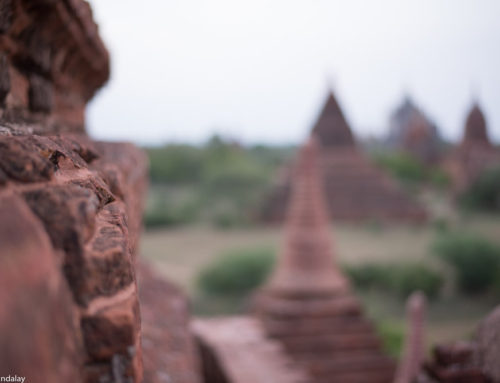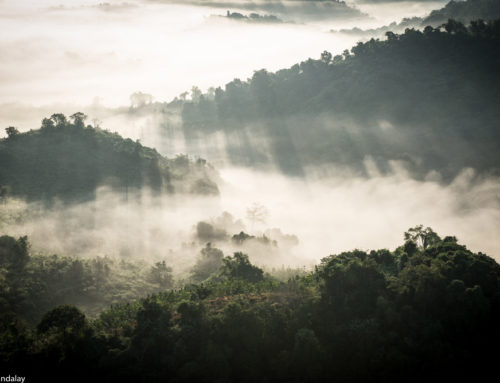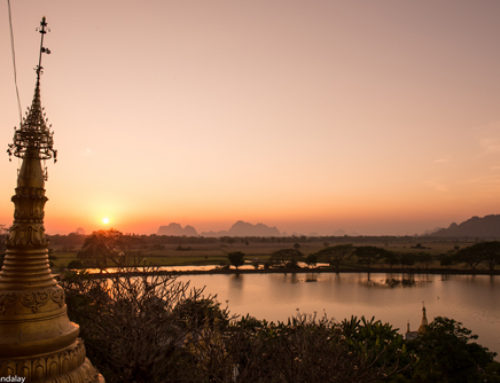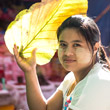Experience pure Myanmar indulgence at three of the world’s most luxurious and architecturally unique properties; Rosewood Yangon, Wa Ale and the Belmond Governor’s Residence. This 8-night itinerary will see you fly into Yangon to explore some of the city’s best cultural and historic highlights, before travelling south for some downtime at Wa Ale, South East Asia’s number one barefoot luxury eco resort. Return to Yangon for a final night of opulence at the end.
An example of a typical Pure Indulgence itinerary can be found below. Please note that this is merely a suggestion and all of the arrangements can be tweaked and tailored to your heart’s content. By clicking on the day, it’s possible to read more about the general logistics and featured excursions.
Day 1 - Yangon (Arrive into Yangon / transfer to hotel / Shwedagon Pagoda)
Accommodation: Rosewood Yangon (breakfast included)
IMPORTANT NOTE: Rosewood Yangon will not open its doors until August 2019; this will be the soft opening phase with the grand opening expected to take place in November.
Welcome to Myanmar! Having cleared immigration, transfer to Rosewood Yangon with your driver and guide. Once the New Law Courts building, this was built in 1931 to house the city’s district courts and the Police Commissioner’s office. The British architects, Dorman Long, were responsible for many colonial era construction projects, including the Sydney Harbour Bridge, which was built around the same time. This will be your home for the next two nights, giving you plenty of time to acquaint yourself with the hotel’s rich and fascinating history.
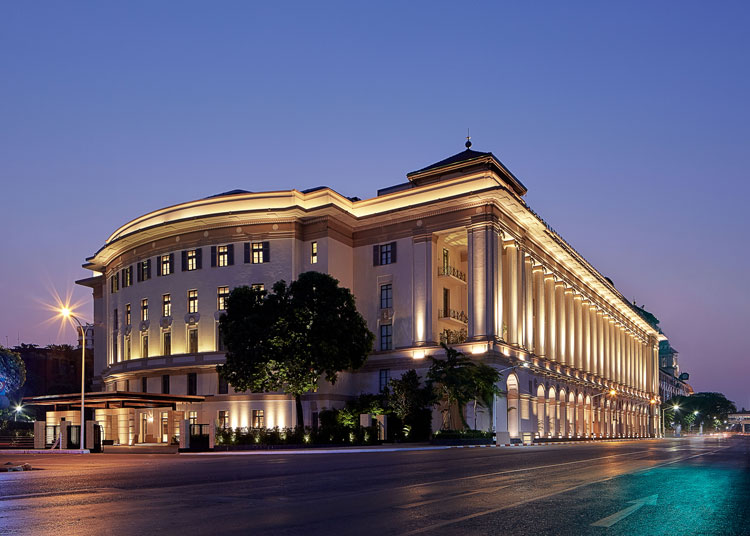
Rosewood Yangon, formerly the New Law Courts building (image sourced from Rosewood)
Later this afternoon, explore what Rudyard Kipling described as, “A golden mystery that upheaved itself on the horizon – a beautiful winking wonder that blazed in the sun”. The 99-metre tall Shwedagon Padoga is the country’s most famous landmark; one that we believe looks extra impressive at sunset. The current hti (a golden umbrella that adorns the top of pagodas) is decorated with approximately 85,000 jewels, with the centrepiece being a 76-carat diamond. History and opulence aside, the highlight for most is brushing shoulders with the people as they go about paying their respects to Shwedagon itself and the 150 smaller pagodas and shrines that surround.
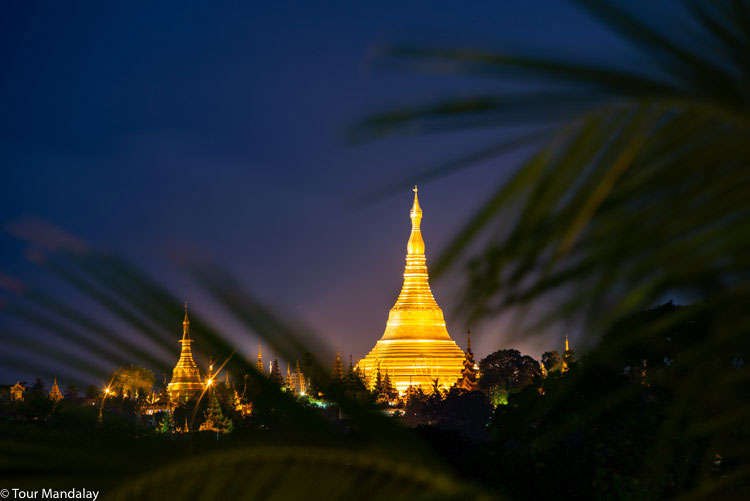
Shwedagon Pagoda in 2019, shortly after being regilded in gold leaf
Return to the Rosewood Yangon to wine, dine and make use of rooftop pool.
IMPORTANT NOTE: The timing of your international flight into Yangon will dictate whether or not the Shwedagon tour will be possible on this day.
Day 2 - Yangon (Balthazar Building / Maha Bandula Park / Old Tourist Burma Building / Sule Pagoda / Pansodan Street / Hla Day / Sofaer & Co / Gekko / River Gallery / 491-501 Merchant Street / Armenian Church / Bogalay Zay Street / Yuwaddy Centre / The Secretariat)
Accommodation: Rosewood Yangon (breakfast included)
After breakfast, reconvene with your guide for a full day exploration of Yangon’s downtown area on foot.
Directly opposite Rosewood, you’ll find the Balthazar Building. Built in 1905 by the prosperous Armenian trading company, Balthazar & Son, this is one of the hardest hitting, accessible examples of the city’s architectural plight; decades of autocratic rule and Myanmar’s unforgiving tropical climate haven’t done buildings like this any favours. Though still an active residence for low-wage government workers and small private businesses, the soot and grime covered interior has become dilapidated in almost every aspect. In spite of it being a shadow of its former self, taking a wander inside provides us with a stark reminder of the city’s potential–just imagine what it would look like if it was restored to its former glory–and why it’s so important to preserve what remains.
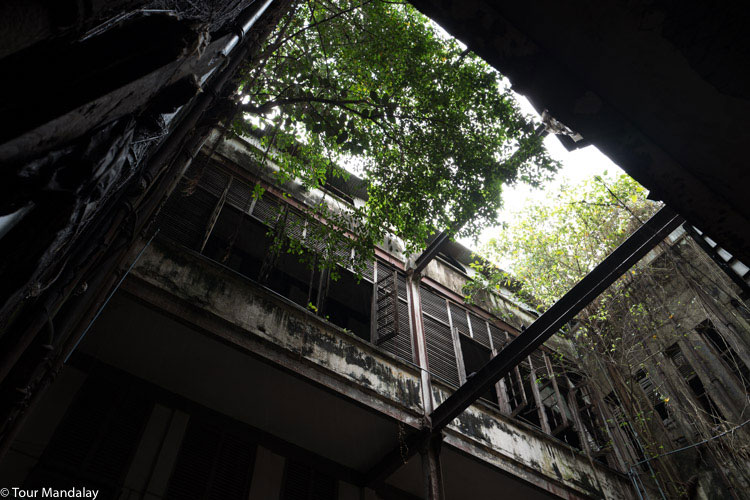
Inside the Balthazar Building; surprisingly, it’s still in use!
Just around the corner from here is Maha Bandula Park, named after General Maha Bandula who fought against the British in the First Anglo-Burmese War (1824–1826). Most people’s eyes tend to gravitate towards the tall pointy monument in the centre, a symbol of Myanmar’s independence from the British granted in 1948. Prior to its erection, a white marble statue of Queen Victoria stood in its place. The architect behind this, Sithu U Tin, also built the City Hall (located at the north end of the park) and Yangon Central Railway Station. From the foot of the monument, it’s possible to enjoy a wide-angle perspective of some architectural delights including the aforementioned City Hall, the Rowe & Co department building–once the Harrods of South East Asia–the High Court and the recently opened Yangon Stock Exchange.
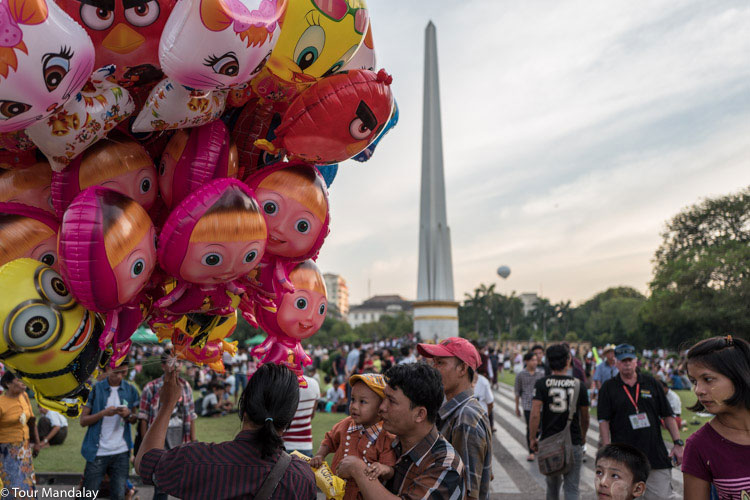
Maha Bandula Park, one of Yangon’s most popular public spaces
The Old Burma Tourist Building stands to the north-west side of the park. Recently restored by Turquoise Mountain, an organisation established by HRH The Prince of Wales to preserve and regenerate historic areas, this grand building originally opened as a department store, rivalling the British-owned Rowe & Co on the park’s north-east side. During World War II it suffered bomb damage, like most of the surrounding buildings, and in later years was home to a publishing house and film studio. It was then used as a government building until 2005, which was the year the capital moved to Naypyidaw. It has been left sitting idle since then letting nature take its course.
To get it looking this good, Turquoise Mountain employed hundreds of local trade professionals and provided on-the-job heritage restoration training. From plasterers to carpenters to welders, it’s not just the aesthetics of the city that has benefitted from this project, but also the people. We’ll take a quick look inside before continuing on.
Opposite the Old Burma Tourist Building is one of Myanmar’s most iconic religious monuments, Sule Pagoda. Prior to British colonisation, this sat on an island, connecting with the much smaller ‘old town’ of Yangon via a wooden bridge. Having clearly taken a liking to it, Lt. Alexander Fraser, the person responsible for downtown Rangoon’s original layout, was quick to make it the central point of his new city. Since then, it has silently witnessed the rise and fall of British rule, Japanese occupation, Nay Win’s military coup d’etat, the bloody 8888 uprising and the Saffron Revolution. As the old saying goes, if only walls could talk… (or in this case pagodas).
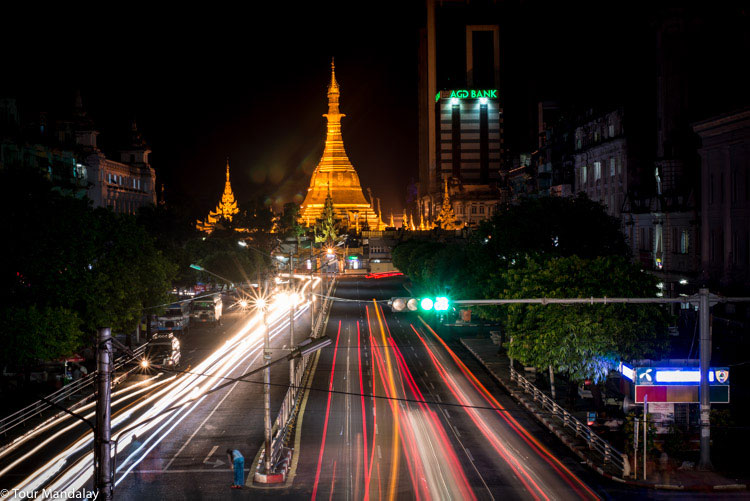
If pagodas could talk; Sule Pagoda’s witnessed it all
From here it’s then a short walk to the street that’s home to the greatest concentration of crumbling colonial facades, Lower Pansodan (formerly Phayre Street). Here you will find Rander House, the Port Authority tower, the Accountant-General’s Office and the offices of the Irrawaddy Flotilla Company. With part of the Small Cases Court having taken a direct hit by a Japanese bomb, it is remarkable to think that this street still stands mostly intact. This is also where you’ll find Hla Day, a social enterprise business that works with disadvantaged groups and small local businesses to design, develop and sell quality handmade products with a contemporary twist.
On the corner of the opposite block (from Hla Day) stands the Lokanat Building, also known at the Sofaer Building. Designed by Issac Sofaer, a Baghdad-born, Rangoon-educated Jew, this was once one of the most popular business addresses in the city. Since it was constructed in 1906, it has been home to the Bank of Burma, the China Mutual Life Insurance Company, Reuters Telegram Company, a German photographer, a Greek leather merchant and a Filipino hairdresser. On top of that, it’s also where people came to buy their Egyptian cigarettes, Munich beer and penny sweets from England. If that doesn’t highlight the city’s cosmopolitan nature, then we don’t know what will.
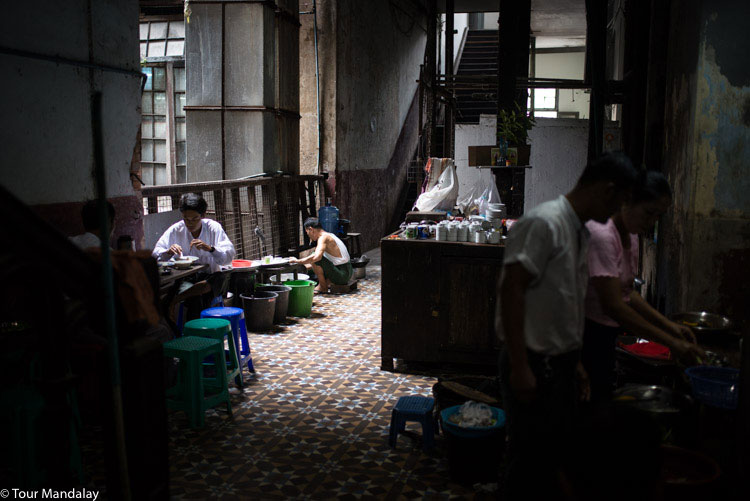
Lunchtime inside the Lokanat Building
Once inside, the first thing you’re likely to notice is the ceramic encaustic floor tiles, a mosaic pattern of green, gold, burnt sienna and lapis lazuli. These were imported from Manchester and installed at the same time as the Lanarkshire Steel Company (Scotland) produced steel beams that support the ceilings. The faded grandeur speaks volumes about what was, but that’s not to say the building’s any less utilised; inside you’ll find the Internal Revenue Department, an art gallery, a tea shop and a small handful of international restaurants.
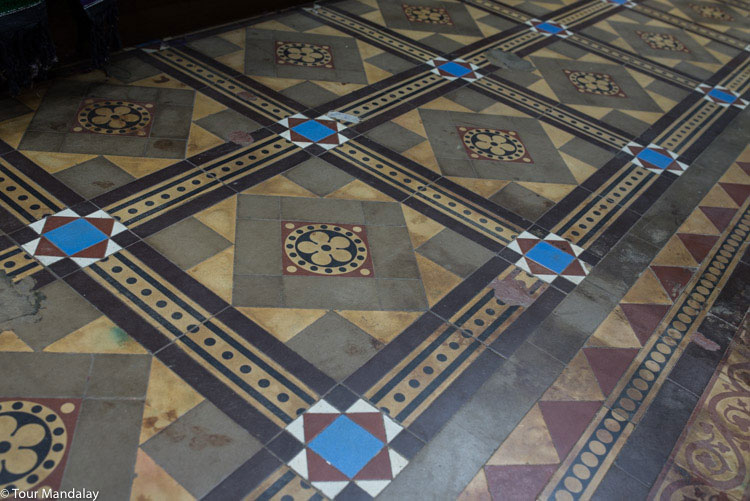
Ceramic encaustic floor tiles inside the Lokanat Building
Before you leave, here’s a couple of random Lokanat Building related facts:
- In the first ever episode of his culinary series, Parts Unknown, the late Anthony Bourdain can be found sipping on a cup of tea inside of here whilst reminiscing about the building’s once prestigious past.
- The voice of Abraham Sofaer, Isaac Sofaer’s son, featured in a couple of episodes of the US cult TV show, Star Trek.
Depending on the time and your appetite, for lunch we’d recommend eating at Gekko, a Japanese-Korean inspired fusion restaurant with one of the tastiest menus and best-restored colonial spaces around.
Proceed a few blocks along Merchant Street, until we reach the block of apartments that make up ‘491-501 Merchant Street’. This is another building that’s been faithfully restored by Turquoise Mountain, whilst training local trade professionals in traditional building techniques. Thanks to their involvement, the building is once again fit for use and you’ll now find residential apartments, restaurants, tea shops and a hostel all under one roof.
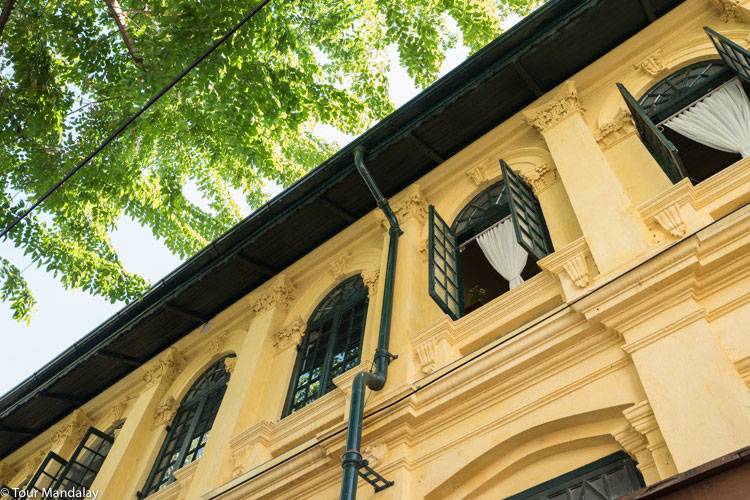
491-501 Merchant Street, another building brought back to its former glory by Turquoise Mountain
Next door is the Armenian Church of St. John the Baptist. This is Yangon’s oldest church and one of the few historic buildings in the city to have received Yangon Heritage Trust’s (YHT) commemorative blue plaque. Founded by Thant Myint-U, grandson of U Thant (the 3rd Secretary-General of the United Nations), one of the main aims of this organisation is to protect buildings such as the Armenian Church from being demolished in favour of unregulated modern monstrosities; this is taking place at an alarmingly rapid rate as we’re sure you’ve already noticed. By awarding these blue plaques, YHT hopes to indefinitely preserve the city’s rich architectural legacy and reward the buildings in question for contributing to the narrative of the city. Perhaps it’ll be a case of too little too late, but there’s no denying that Yangon’s in a much better state now thanks to YHT’s lobbying and their long-term heritage strategy; those keen to learn more about the latter can do so by clicking here.
Yangon’s first Armenian Church was built in 1766, close to the banks of Yangon River. After the British relocated the capital of British Burma from Mawlamyaing to Yangon in 1852, the city was redesigned in a grid-style layout with set quarters being assigned to citizens based on their ethnicity and cultural tradition; this blatant racial segregation sounds unthinkable now, but it was a common characteristic of British colonial urbanism at that time. Although the land upon which the church now stands was originally gifted by the King of Burma, in gratitude for the Armenian’s many years of loyal service, the British honoured this agreement and permitted it to be factored into the new design. The church was eventually consecrated on January 17th, 1863. Sadly, the last “full” Armenian passed away in 2013, and it is thought that no more than 10 or 20 “part” Armenian families still remain.
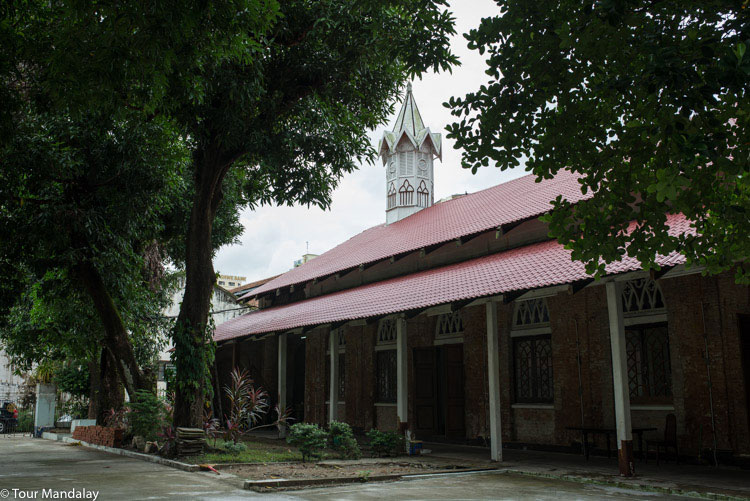
St. John’s Baptist Church, the oldest surviving in Yangon
Look directly across the road from here and you’ll notice the derelict Mahatma Ghandi Hall. In the early 1900s, this was the office of the Rangoon Times until it was purchased by Prime Minister U Nu and the Indian Ambassador to Myanmar in 1951. They named it the Mahatma Gandhi Memorial Trust in honour of the late spiritual leader and handed it to a board of trustees to manage. That same group of trustees now wants to demolish the existing structure and replace it with a 12-story apartment block. A dispute between them and YHT is ongoing.
Cross the road and proceed up Bogalay Zay, one of our favourite Yangon Streets. Here we’ll stop to take a look inside the Yuwaddy Centre; set up by the Young Women’s Christian Association (YWCA), this is a small social business that provides training and employment to underprivileged women in the post conflict areas of Thandaungyi, Karen State. Products the talented ladies in question produce can be found inside; these range from pots of honey, freshly ground coffee, bags and bracelets. Any money you spend here goes towards an extremely worthwhile cause and whilst there, we’ll also try to arrange a sit down with one of the organisation’s founding members.
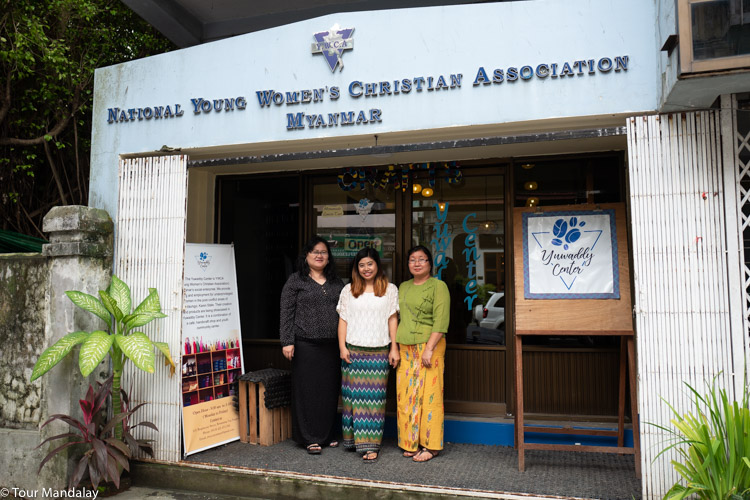
The amazing women behind the Yuwaddy Centre on Yangon’s Bogalay Zay Street
Before leaving and with the Yuwaddy Centre’s permission, we’d recommend stepping inside the YWCA building next door. Established in 1902, at a time when Bogalay Zay Street was known as Brooking Street, it would serve as a temporary base for young women keen leave the seclusion of their homes in search of a more independent and fruitful life in Rangoon. Over one hundred years on and it is still one of Myanmar’s leading organisations providing support to disadvantaged individuals across the country. Notable projects include child labour protection, home care for senior citizens, ‘Meals on Wheels’ and numerous vocational training courses.
Having walked through Bogalay Zay Street, cross the road to The Secretariat, our final stop of the day. Sometimes referred to as the Ministers’ Building, Myanmar’s grandest colonial relic was once the home and administrative seat of British Burma. Nowadays, it is perhaps remembered less for that and more for General Aung San, his six cabinet members, a cabinet secretary and a bodyguard; on 19th July 1947 a gang of armed men burst into the building and assassinated them during a meeting of the Executive Council. Once inside, we’ll learn more about the reasons behind the targeted assassination, whilst taking time to explore the gutted interior of a colonial gem that’s long been off-limits to the general public.
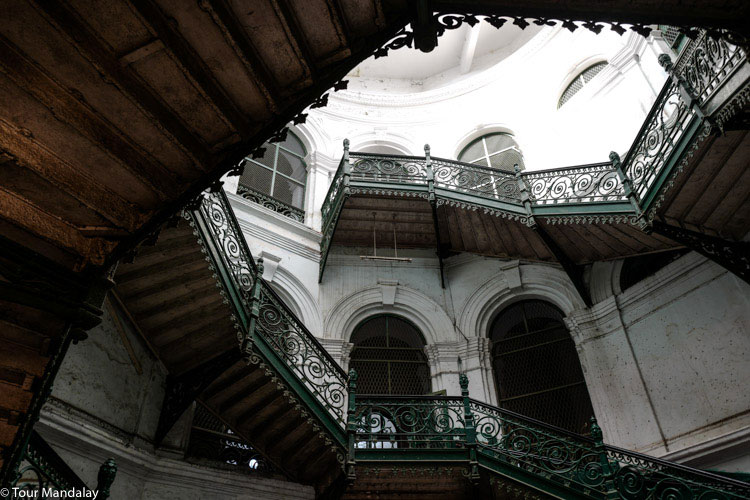
The Secretariat Yangon, the building inside of which General Aung San and his comrades were assassinated
Return to Rosewood Yangon to freshen up before being transferred to SEEDS, Yangon’s finest lakeside restaurant.
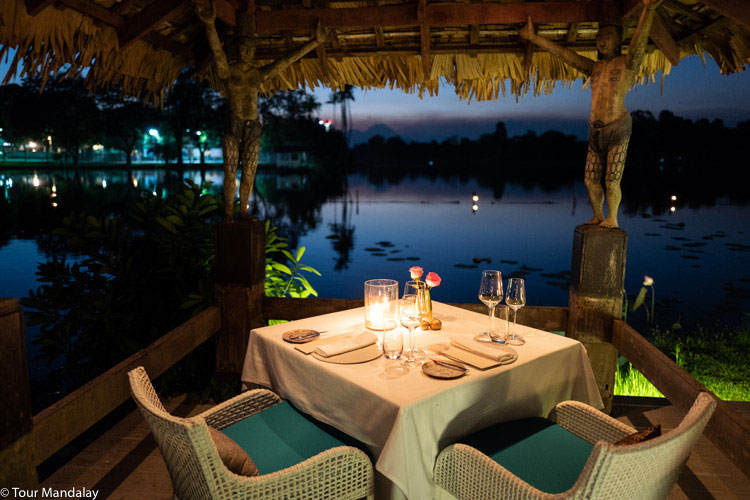
SEEDS, the best restaurant for lakeside dining in Yangon
The vehicle will be at your disposal until 23:00 but try not to stay up too late as tomorrow will require an early start.
Day 3 - Wa Ale Island (Transfer to airport / domestic flight / boat transfer / at leisure on Wa Ale Island)
Accommodation: Wa Ale Resort (breakfast, lunch and dinner included)
At the break of dawn, transfer to Yangon’s domestic airport in time for a flight to Kawthaung. On arrival into Myanmar’s southernmost town, meet with Wa Ale representatives who will transfer you to the jetty.
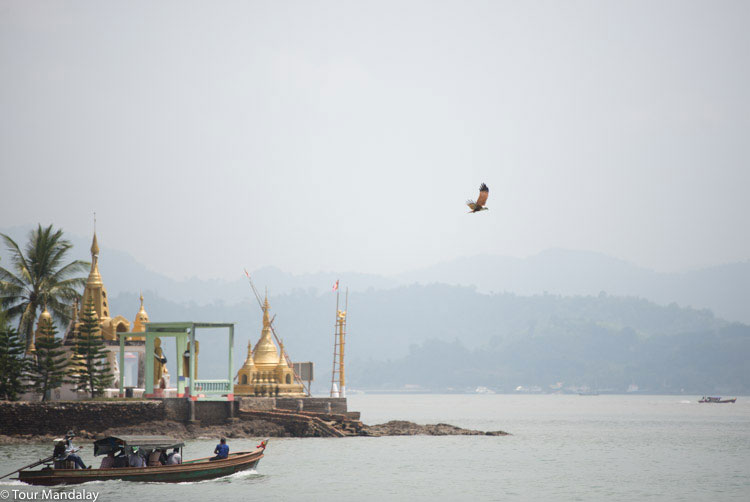
A bird or prey swoops over a pagoda near Kawthaung Jetty
You may be lucky enough to depart for Wa Ale straight away, but that will depend on whether or not everyone has arrived; there’s only one boat to Wa Ale and it’s shared (or private if it’s only you). The latest time it will depart is 14:00, so if you find yourself with time to spare, feel free to explore some of Kawthaung’s highlights or relax in the resort’s waiting lounge.
NOTE: Complimentary transfers from Kawthaung to Wa Ale operate on Saturdays and Tuesdays only. Outside of these days, a supplementary charge will apply.
Once the boat is ready to depart, you’ll be looking at another 1 hour 40 minutes to 2 hours until you reach the island, so be sure to take advantage of the inclusive beverage selection. This will perfectly complement the views of desert island scenery you’ll lay eyes upon en route.
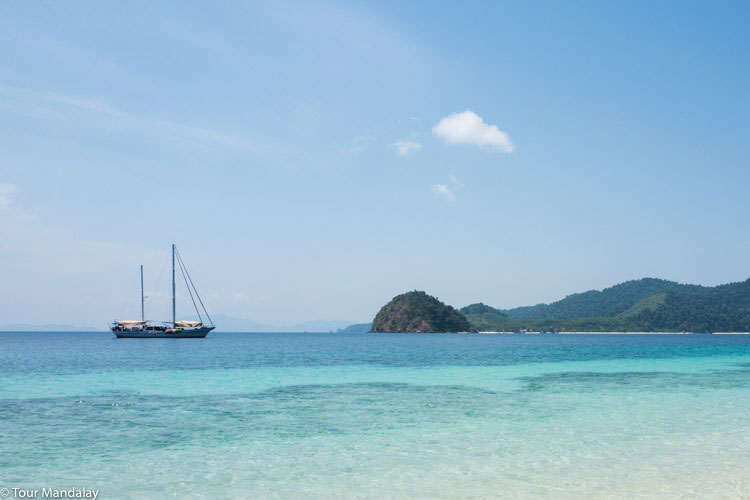
Mergui Archipelago’s azure waters and deserted islands
You won’t find a Wa Ale-branded property anywhere else in the world; there is only one. It’s this grassroots, one of a kind nature that gives you confidence that Wa Ale’s true to its purpose, which is to establish a luxury eco-resort that doesn’t negatively impact the environment in any way whatsoever. It’s not just marketing, it’s an ethos that runs deep in the veins of its staff and defines every single business and operating decision.
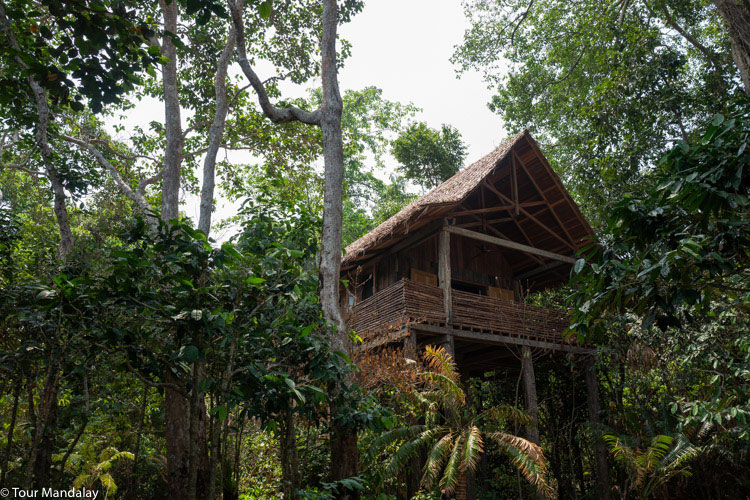
Wa Ale’s Treetop Villa
Having arrived and acquainted yourself with your hosts, the remainder of the afternoon is free for you relax and explore Wa Ale Island at leisure. From going on a morning jungle trek with Alexander ‘The Naturalist’ to diving with Greg and Aqhari from the dive team, you’ll find no shortage of activities to get involved in. Alternatively, you may wish to explore the healing benefits of reiki with Laurel ‘The Wellness Specialist’, or drift off whilst enjoying a private massage (from Sisi) back in the comfort of your villa. The only thing you’ll need to plan for is Wa Ale’s delightful breakfast, lunch and dinner.
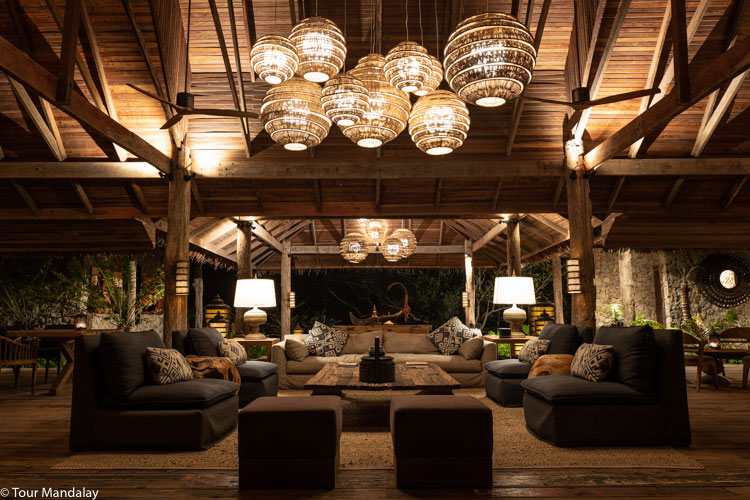
Wa Ale’s lounge area; it won’t take long until you feel at home
To learn more about the room types and what you can do at Wa Ale, please click here.
Day 4 - Wa Ale Island (At leisure on Wa Ale Island)
Accommodation: Wa Ale Resort (breakfast, lunch and dinner included)
Day free to relax and explore Wa Ale Island at leisure.
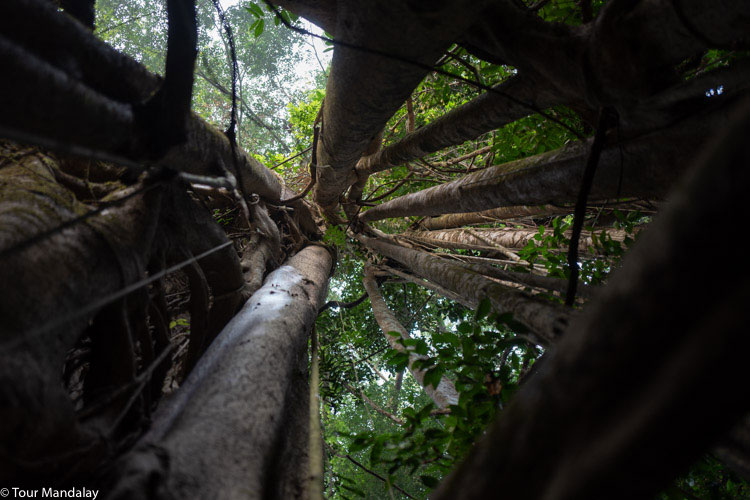
Things to do: Trek deep into Wa Ale Island’s jungle
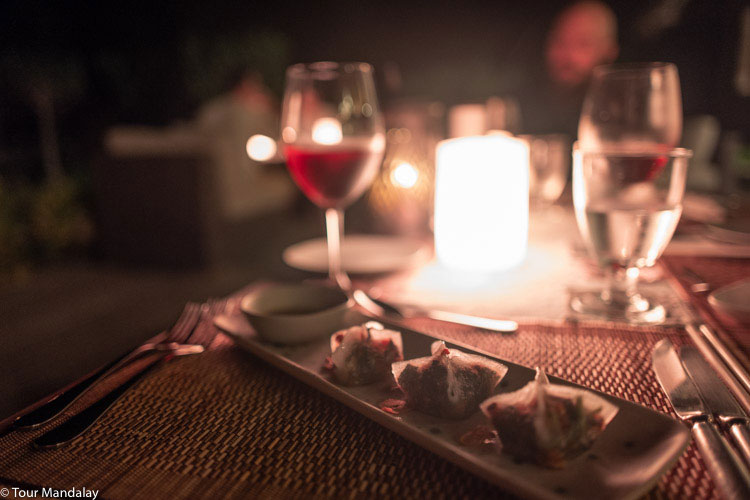
Things to do: Wine and dine with candles
Day 5 - Wa Ale Island (At leisure on Wa Ale Island)
Accommodation: Wa Ale Resort (breakfast, lunch and dinner included)
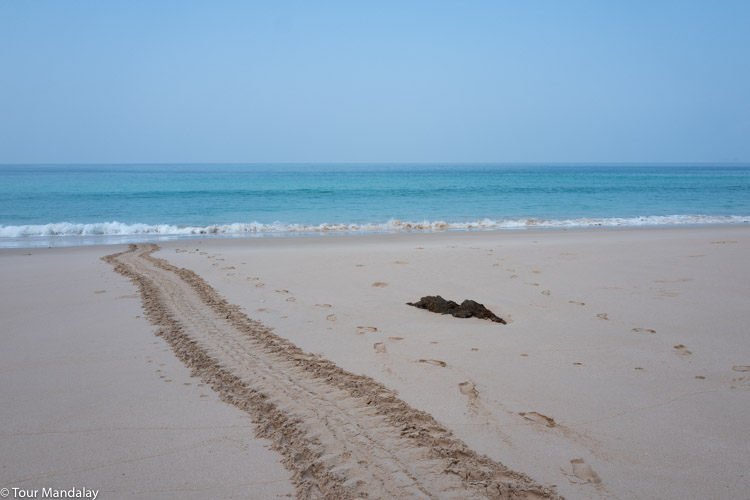
Things to do: Keep an eye out for turtle activity
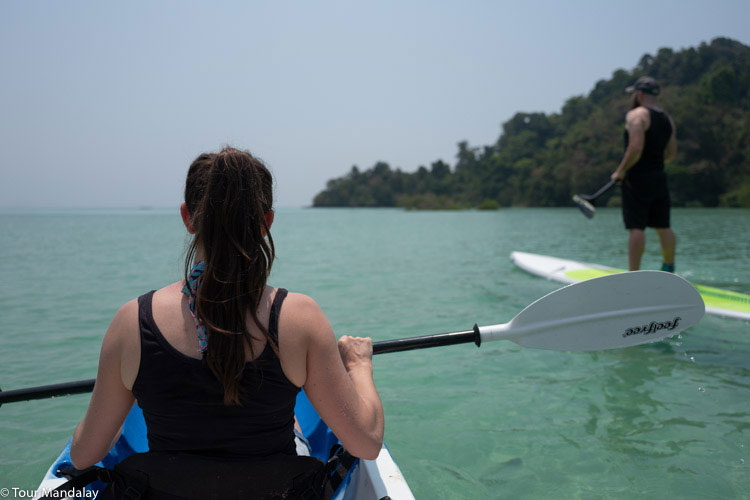
Things to do: Kayak and stand up paddle board around Wa Ale’s waters
Day 6 - Wa Ale Island (At leisure on Wa Ale Island)
Accommodation: Wa Ale Resort (breakfast, lunch and dinner included)
Day free to relax and explore Wa Ale Island at leisure.
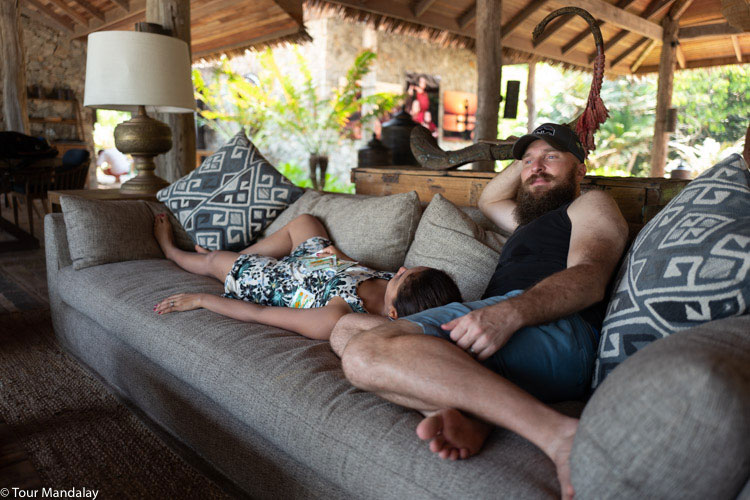
Things to do: Put your feet up
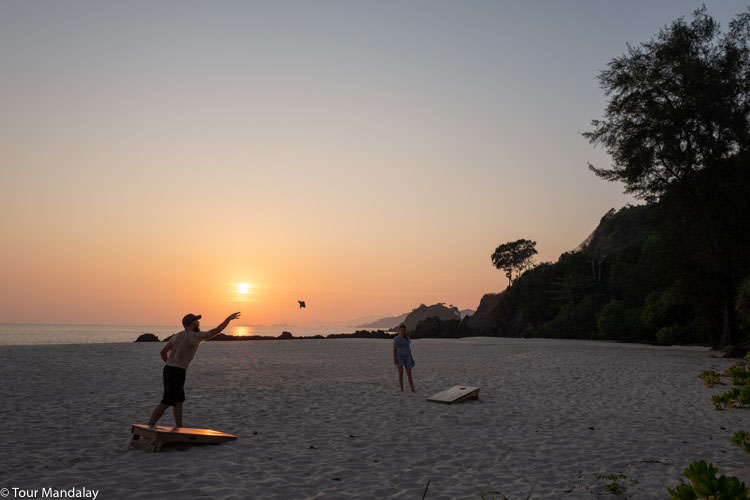
Things to do: Play beach games into sunset
Day 7 - Wa Ale Island (At leisure on Wa Ale Island)
Accommodation: Wa Ale Resort (breakfast, lunch and dinner included)
Day free to relax and explore Wa Ale Island at leisure.

Things to do: Read a book in Wa Ale’s mangrove oasis
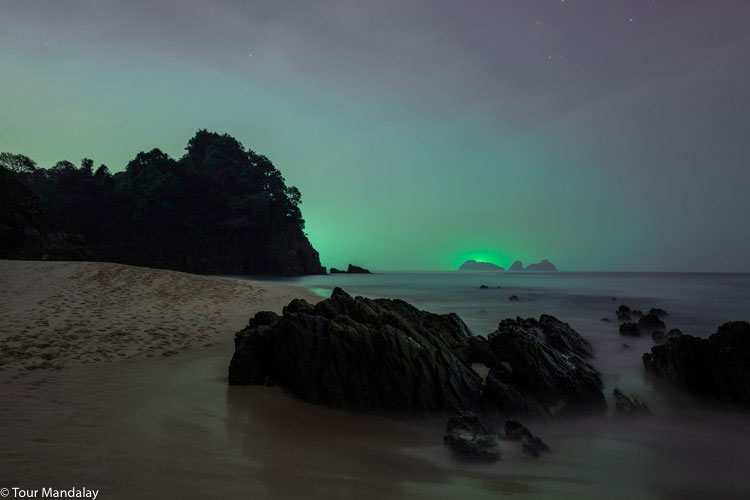
Things to do: Evening stroll along Wa Ale’s private 1km stretch of white sand beach
Day 8 - Yangon (Boat transfer / transfer to airport / domestic flight / transfer to hotel)
Accommodation: Belmond Governor’s Residence (breakfast included)
Set off from Wa Ale at 08:00 this morning and trace your steps back to Yangon.
Once back in the commercial capital, reconvene with you guide who will magically whisk you back in time to 1920s Rangoon. Well, not really, but you’d be forgiven for thinking that at the Belmond Governor’s Residence. Set in a leafy green oasis dotted with peacocks and lotus pools, spending a night at this former governor’s mansion is a great way to ensure your time in Myanmar ends with a bang.
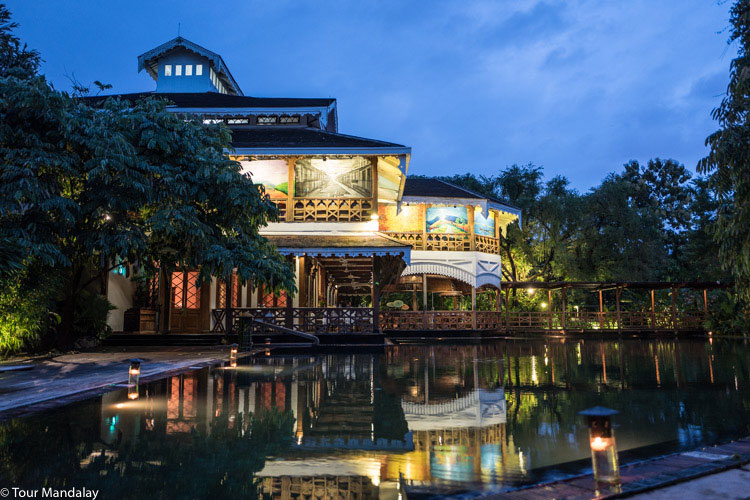
The Governor’s Residence at night
The remainder of the afternoon is free for you to spend at leisure; the pool, spa and restaurant at the Governor’s Residence come highly recommended.
Day 9 - Yangon (Transfer to airport / fly home)
Transfer back to Yangon international airport in time for your flight back home.
Keen to design your own ‘Pure Indulgence’ itinerary? Get in touch with one of our specialists by writing to info@tourmandalay.travel.

